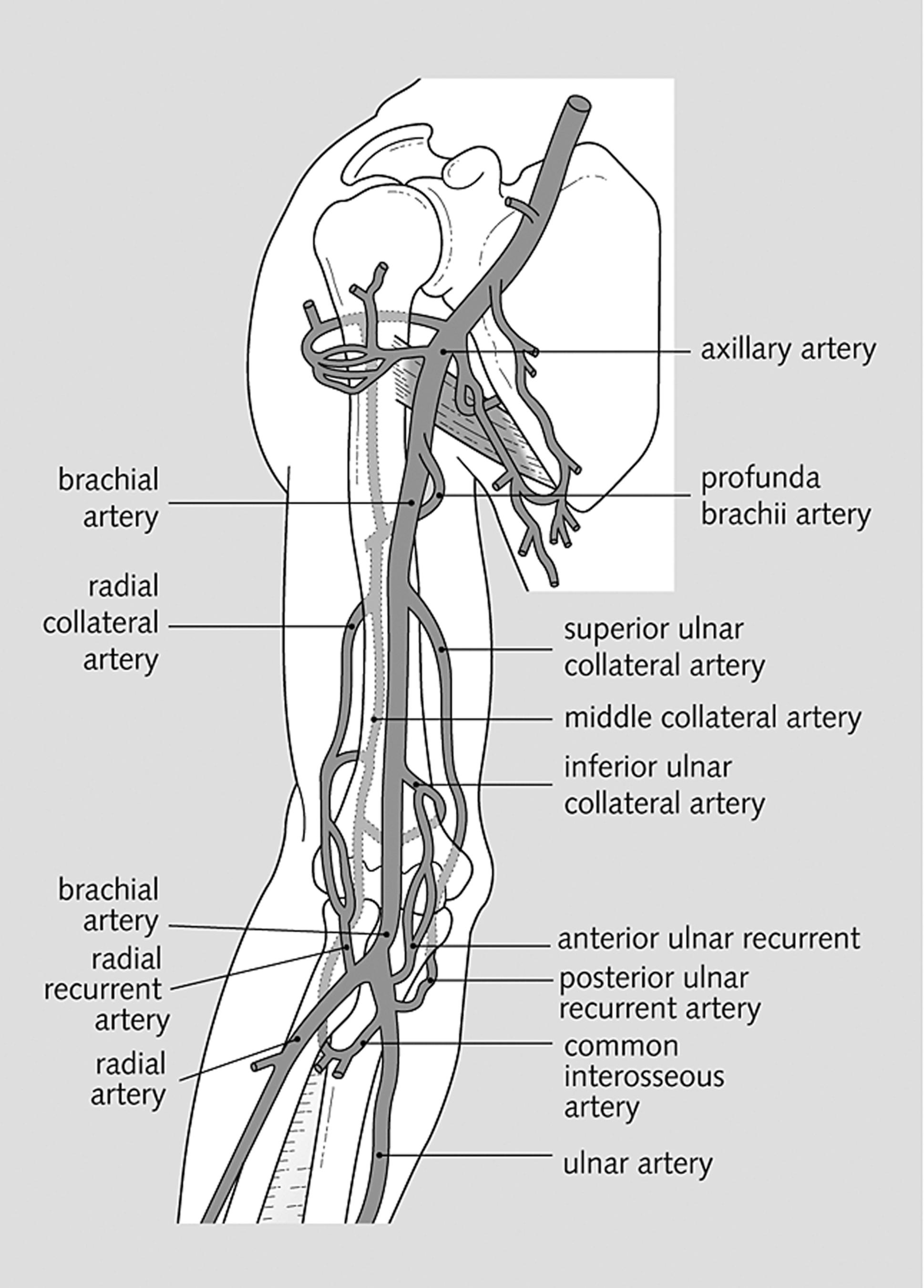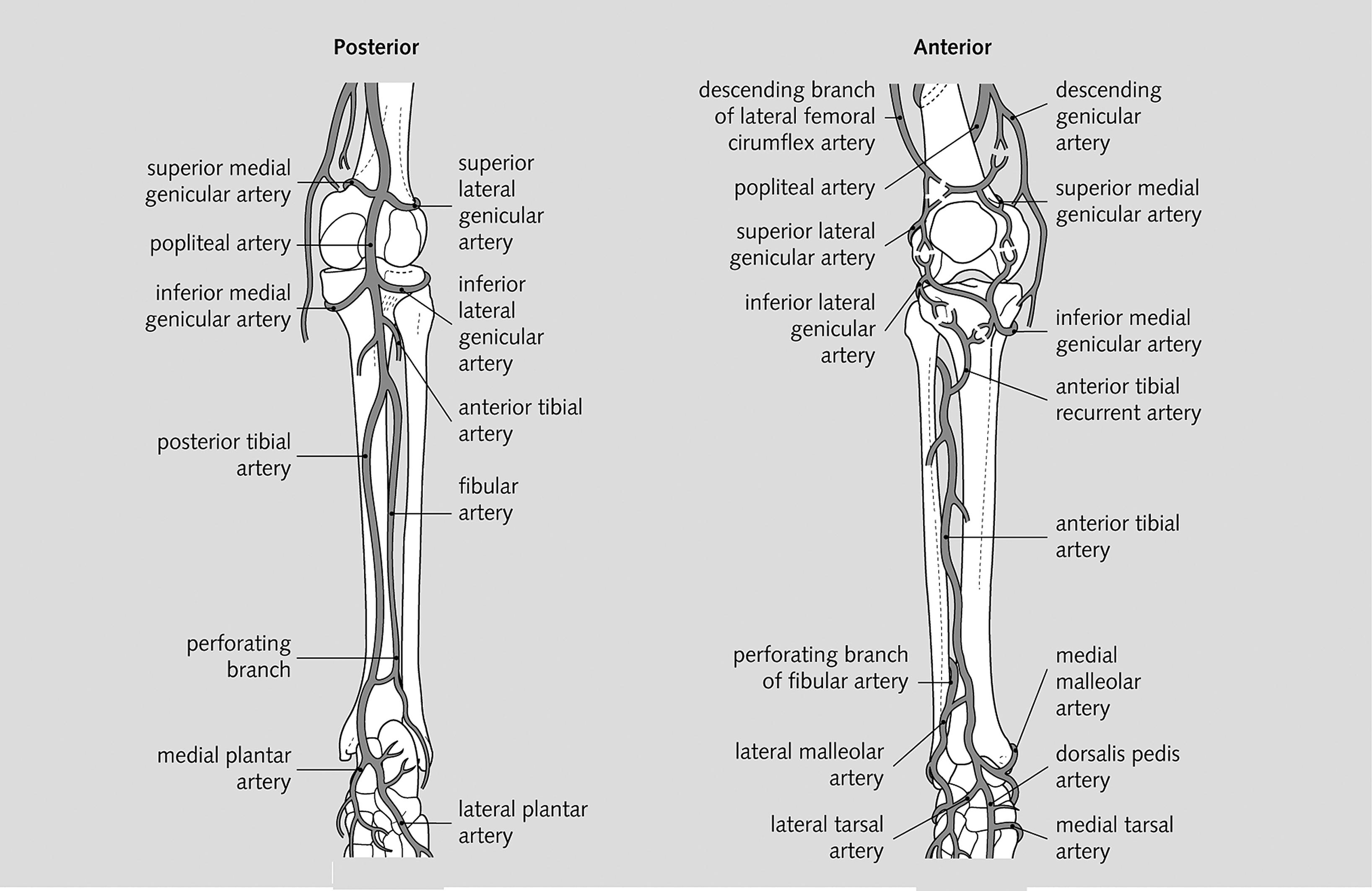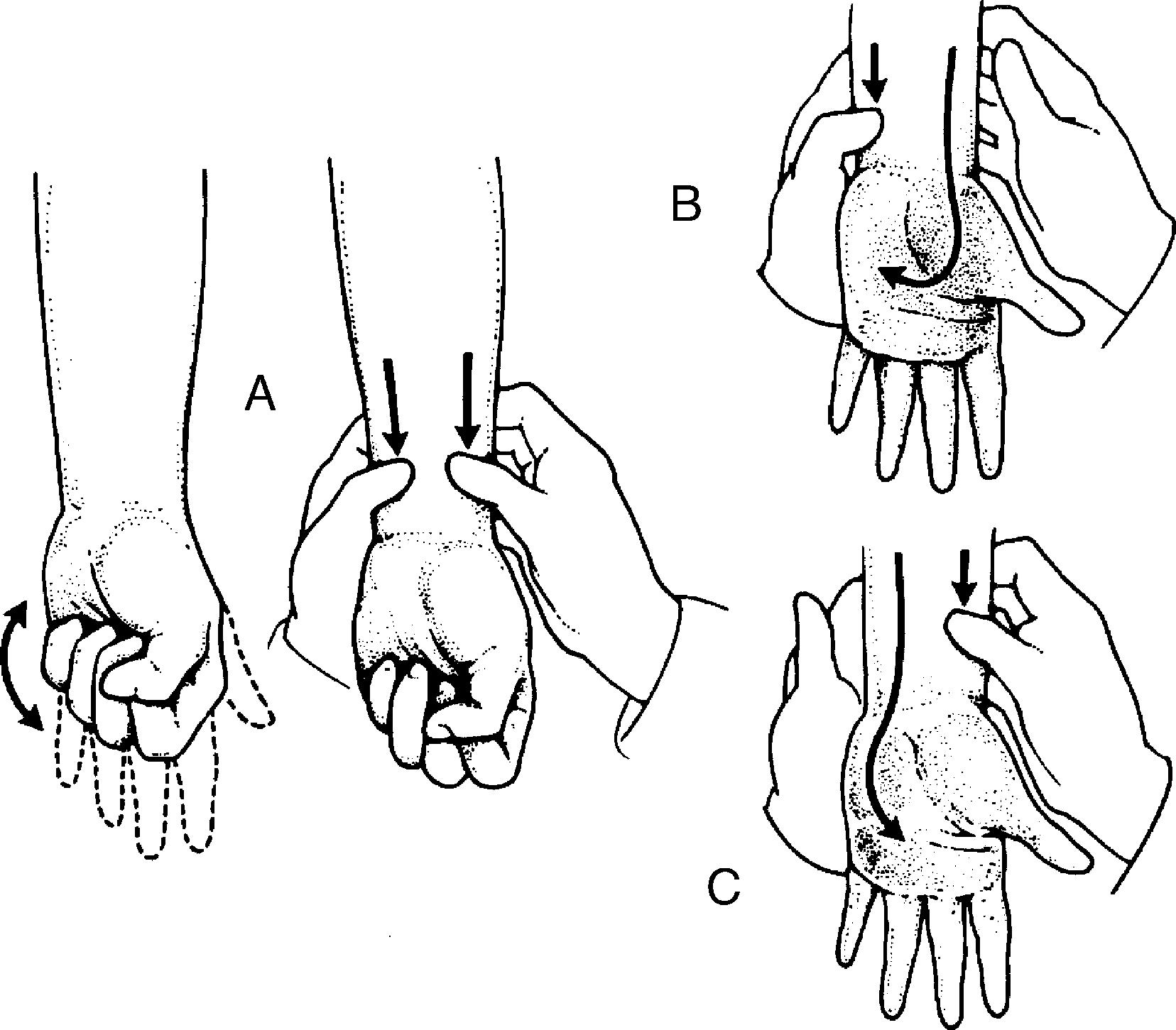Physical Address
304 North Cardinal St.
Dorchester Center, MA 02124
In Medicine it is always necessary to start with the observation of the sick and to always return to this as this is the paramount means of verification. Observe methodically and vigorously without neglecting any exploratory procedure, using all that can be provided by physical examination. –Antoine B.J. Marfan
What is the role of the extremities’ exam?
Often examined last, the extremities can still provide important clues to the astute observer. You should focus on the vascular, musculoskeletal , and sensorimotor components of the limbs. In this chapter, we shall discuss the vascular evaluation and address the other two components in the musculoskeletal and neurologic chapters.
Which arteries should be examined in the upper and lower extremities?
The major branches of the brachial and femoral arteries ( Figs. 19.1 and 19.2 )


Which veins should be examined?
What causes a weaker and delayed pulse in the left arm as compared to the right?
It depends on the patient’s age: in younger individuals, it is usually coarctation , in the elderly, it is instead an atherosclerotic obstruction or a dissection of the aorta. Depending on the level of obstruction, asymmetry and delay in pulses may only affect the lower extremities. Hence, the need to examine all peripheral pulses, especially in symptomatic or hypertensive patients. A pulse asymmetry can be confirmed by comparing systolic pressure of the two arms or by comparing that of lower extremities to upper extremities.
What is Raynaud’s phenomenon?
An exquisite sensitivity of hands and fingers to cold, but also to smoking and emotional stress. Upon exposure to the trigger, fingers exhibit a typical “triple response,” which very appropriately for Raynaud follows the colors of the French flag: initial pallor and blanching (white), followed by cyanosis (blue), and finally by rubro (red). Eventually, the fingers slowly return to their baseline color. Numbness, tingling, or pain accompanies this response. The white-blue-red response may at times be out of sequence, with patients exhibiting a blue-white-red response or even single-color responses (only blue or white).
What causes Raynaud’s phenomenon?
A spasm of the digital arteries, resulting in ischemia of the fingers, with pallor at first and cyanosis later (due to increased oxygen extraction from trapped and noncirculating erythrocytes). The final stage of redness coincides with the reperfusion that follows release of the arterial spasm. This also is the phase mostly characterized by numbness or pain (a bit like the numbness and pain experienced in legs that have “fallen asleep”). Severe vasospasm may even lead to infarction and dry gangrene.
How can Raynaud’s phenomenon be artificially triggered?
By immersing the patient’s hand in a bucket of iced water.
What is the clinical significance of Raynaud’s phenomenon?
It can precede several important disorders, including:
Connective tissue diseases (systemic lupus erythematosus [SLE], mixed connective tissue disease, rheumatoid arthritis, dermatomyositis, and polymyositis, but especially progressive systemic sclerosis , which is present in 17%–28% of patients with Raynaud’s)
Hematologic disorders (cryoglobulinemia, polycythemia, monoclonal gammopathy)
Arterial compression syndromes (thoracic outlet and carpal tunnel syndromes)
Vasculitis and atherosclerotic arterial disease
Various drugs and toxins
Recurrent trauma (use of percussion or vibratory tools)
Miscellaneous disorders (hypothyroidism, reflex sympathetic dystrophy, primary pulmonary hypertension, Prinzmetal angina, acromegaly, Addison’s disease). Still, one of five patients with Raynaud’s does not seem to have any underlying disorder (i.e., Raynaud’s disease ).
Who was Raynaud?
Maurice Raynaud (1834–1881) was one of the great 19th-century French physicians. The son of a university professor, he graduated in Paris at age 28 with a thesis describing his famous syndrome, which made him an instant celebrity. An excellent clinician and a beloved teacher, he also was passionately interested in literature, history, and the arts. In fact, all his life he sought the chair of Medical History at the University of Paris, but he died before this could happen. His contributions to medical knowledge included the book Medicine in Molière’s Time and an article on the Greek physician Asclepiades of Bithynia (an opponent of Hippocratic medicine and the unrivaled authority of his times, who treated celebrities like Cicero, Crassus, and Marc Antony). In 1881, Raynaud wrote an address to the International Medical Congress of London titled “Skepticism in Medicine, Past and Present,” but died before delivering it.
What is Allen’s test? What does it mean?
It is a bedside test for patency of the deep palmar arch and of radial / ulnar arteries ( Fig. 19.5 ). Hence, a good way to learn about the risks of radial artery puncture and/or cannulation.
Compress the patient’s radial artery until blood flow is stopped.
Have the patient clench and unclench the hand several times in sequence until there is a visible blanching of the hand .
When the patient finally relaxes the hand, there will be visible refilling of the capillary bed from the ulnar side, with return of the normal pink color within 5 seconds.
Absence of refilling (the pallor persists in spite of the hand’s relaxation) or delay in refilling (return of the color takes longer than 5 seconds) indicates a positive test. This reflects occlusion of either the ulnar artery or the deep palmar arch.
Repeat the maneuver on the contralateral hand, comparing size of the refill area and length of refill time.
Finally, repeat the entire sequence, but this time compress the ulnar arteries, first on the right and then on the left.

Isn’t the test conducted by simultaneously compressing the ulnar and radial arteries?
Yes, it may be. This is, in fact, a variant of the Allen’s test, conducted as follows (see Fig. 19.5 ):
Compress both the radial and ulnar arteries.
Ask the patient to sequentially and vigorously clench/unclench the hand, so as to squeeze all blood out. When the palm finally blanches, ask the patient to relax the hand.
Release pressure only on the ulnar artery, and measure the time it takes for the palm to regain its color. This is the refill time for the ulnar artery .
If refill is delayed or absent (see Question 12), do not attempt a radial puncture, but consider instead either a brachial stick or an arterial puncture on the contralateral hand (after similarly checking the arterial supply, of course).
Repeat the test, but this time release pressure on the radial artery only, thus measuring refill time for that vessel only .
How do you report the results of an Allen’s test?
By indicating (1) the name and side of the artery compressed (for example, RR for r ight r adial) and (2) refill time expressed in seconds. Thus a RR5/RU3 means that it took 5 seconds to refill the capillary bed of the right palm after releasing the right radial artery, and 3 seconds after releasing the right ulnar artery. Arteries with >15 seconds refill time should not be cannulated. Instead, the contralateral hand should be instrumented.
Who was Allen?
Edgar V. Allen (1900–1961) was an American physician. A native of Nebraska and a graduate of that state’s university, Dr. Allen eventually moved to the Mayo Clinic, where in 1947, he became professor of medicine. His contributions include the clinical use of coumarin anticoagulants and a landmark textbook of peripheral vascular diseases.
Become a Clinical Tree membership for Full access and enjoy Unlimited articles
If you are a member. Log in here